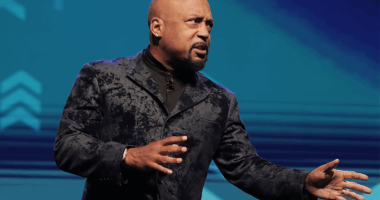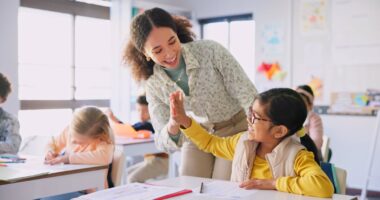Elevating Student Success and Outcomes through Collective Efficacy in PLCs
Session notes from "Elevating Student Success and Outcomes through Collective Efficacy in PLCs," presented by Ashley Farrington and Shelbie Smieja, at UNITED: The National Conference on School Leadership.

What was the speakers’ main message?
As a primer and introduction to PLCs, the goal of the presentation was to help the participants know and understand the components of effective professional learning communities, define collective efficacy and its impact on student learning, gain strategies to lead effective PLCs in their school buildings.
What was the speaker’s best quote?
“The collaborative team is the fundamental building block of the organization. A PLC is composed of collaborative teams whose members work interdependently to achieve common goals – goals linked to the purpose of learning for all – for which members are held mutually accountable.” – DuFour, DuFour, & Eaker (2008)
What were the top ideas from the session?
Teaching and learning must be based on the Three Big Ideas of a PLC:
- Learning: We focus our efforts on ensuring learning for all students;
- Collaboration: We work together as members of a collaborative team; and
- Results: We measure our effectiveness based on results.
Further, Hattie’s research shows that the practice that has the greatest impact on student learning, with an effective size of 1.57 (with 0.4 being the fulcrum point), is collective teacher efficacy.
The research shows that when we work together, we can magnify our impact, which is why we need PLCs and collective efficacy. Teachers working collaboratively has the greatest impact on student achievement. Principals working as instructional leaders has significant impact on student achievement. The PLC structure fosters ongoing use of levels of data to inform instructional decisions and changes in adult behavior (not what can students do differently, but what can the adults do differently).
PLCs are a journey. The presenters shared a great overview of the process, with key actions, they went through to create powerful learning teams.
Where We Started
- Led by building instructional leader/team
- Set on recurring date
- Used norms, commitments, and protocols
- Mindset shift (our students, asset framing over deficit thinking)
- Curating PLC resources
Where Are We Now
- Building alignment on goals and literacy
- Student centered PLCs
- Embracing/Living stages of PLCs
- Standards drive learning
- Using staff to create collective efficacy
- Push-in model
Where Are We Going
- Using data to drive instruction
- Improving Tier 2 instruction
- Focusing on questions 3 and 4 (below)
- Using collective strength of PLC team
- Increasing shared accountability and responsibility
What is one strategy that will help you with instructional leadership?
Moving beyond just identifying the four questions that guide PLCs, the presenters outlined what the questions actually look and sound like in practice. I would like to see our PLCs outline a similar process to guide their work.
What do we want all students to learn?
- Identify essentials and create learning targets
- Understand collectively each standard/learning target
- Unit and lesson development
How will we know if each student has learned it?
- Select or develop common assessments, determine success criteria, and set SMART goals
- Teach, differentiate, check for understanding
- Give common assessment
- Analyze data to improve both student learning and teacher practice
How will we respond when some students do not learn it?
- Target reteaching—individual/small group
- Reassess—student learning and instructional practice
How will we extend the learning for students who have demonstrated proficiency?
- Produce a product based on the essential learning
- Introduce students to nonessential outcomes
What is one idea that you want to learn more about?
Framework of Team Health and Productivity from Erkens and Twadell’s Leading by Design: An Action Framework for PLC at Work Leaders. This framework outlines team impact on two criteria: health and productivity. This is a powerful tool for team reflection, especially as they seek to achieve the three big ideas of learning, collaboration, and results.
What resources will you check out?
I can’t wait to tell my teachers about this idea:
Farrington and Smieja left the audience with some questions to challenge for PLCs growth. I am excited to ask these questions of the PLCs within our school to create reflection for increased student achievement and continuous school improvement.
What can you do to help reach an ideal state in your PLC?
- As an instructional leader, how do you prioritize your time to be part of PLCs?
- What are some small changes you can make?
- What is one actionable next step for your building PLCs?
- What is something that you can begin tomorrow?
- What other things you need to think about when you think about high-functioning PLCs in your building?
Todd Brist is principal of Watertown Middle School in Watertown, South Dakota.
Read more session notes in the NAESP Conference Blog.




